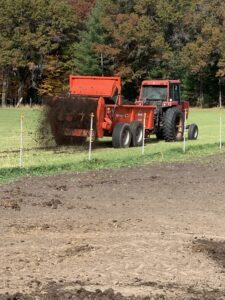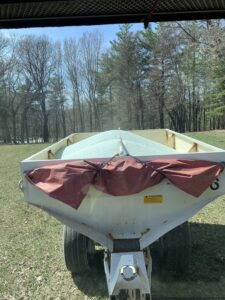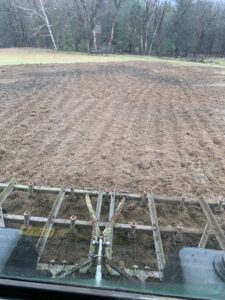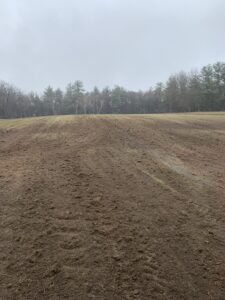Taking Care Of Our Hay Fields & Pastures

Behind the horse
Behind every horse, every day of the year is a support system that never stops. The horses on our farm need the basics of feed, water, and shelter. Each of these basic needs requires thought, logistics, and work. We’ve talked about the feed in past blogs so let’s take a look at what it takes to keep the hay growing and the green grass of summer pastures healthy.
Good quality hay and grass require nutrients, just like the horses, our hay and pasture grass require feed, (minerals), and water. We do not irrigate our pastures or hay ground and rely on rainwater from, “Mother Nature”. We can’t control Mother Nature and the rain but what we can manage are the minerals that our hay and pasture ground receives. When the horses graze on grass or we harvest hay, we are taking something away from the land, and that something is “nutrients”. Without replacing the nutrients the hay and grass start to contract, becoming less vibrant and less nutritious for our horses. An old saying in farming is, “It takes as much effort to harvest a poor crop as it does to harvest a good crop”. That old saying is mostly true except, harvesting a good crop requires more transportation of the harvested crop, in our case hay, and more hay storage.
In the fall we spread our composted horse manure on our hay fields and pastures. This happens after the horses are taken off pasture and the hay has all been harvested for the year. The manure will break down over the winter and in the spring we supplement our ground with more precise mineral needs. Think of the manure as a long-term, slow-release nutrient and the spring fertilizer as an energy booster type of drink. The timing of the spring energy application is critical to the grass and hay. Again, we rely on mother nature for moisture and try to apply our minerals before it rains to ensure the nutrients soak into the ground and the root system of the hay and grass. We also need to plant new grass in areas that are thin or the horses overgrazed. All of this preparation requires time, equipment, knowledge, teamwork, and capital to achieve the desired results.
As you drive by a beautiful field please know that it just did not happen without preparation, perspiration, help from mother nature, and of course a farmer. Just like our horses, the proper inputs, feed, water, and care result in a healthy and productive hay crop and green pastures.
Preparing the field for a new seeding of hay.



